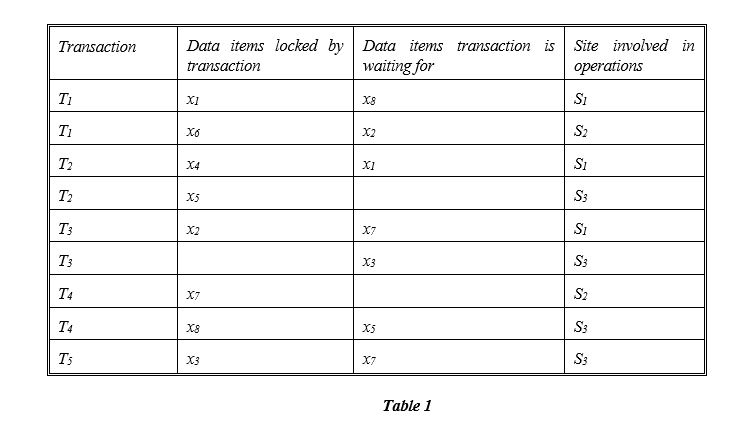Essay
Consider six transactions T1, T2, T3, T4, and T5 with:
- T1 initiated at site S1 and spawning an agent at site S2,
- T2 initiated at site S3 and spawning an agent at site S1,
- T3 initiated at site S1 and spawning an agent at site S3,
- T4 initiated at site S2 and spawning an agent at site S3,
- T5 initiated at site S3.
The locking information for these transactions is shown in Table 1. Produce the local wait-for-graphs (WFGs) for each of the sites. What can you conclude from the local WFGs?

Correct Answer:

Verified

Conclusion: There ...View Answer
Unlock this answer now
Get Access to more Verified Answers free of charge
Correct Answer:
Verified
Conclusion: There ...
View Answer
Unlock this answer now
Get Access to more Verified Answers free of charge
Q4: Object databases have roots in both programming
Q5: Case Study - Library System<br>The librarian will
Q6: Despite the superior expressive power of the
Q7: Under the three-phase commit protocol, discuss how
Q8: Discuss how OIDs differ from C++ pointers.
Q9: Using the above transactions, demonstrate how Obermarck's
Q10: One of the most well-known methods for
Q11: Discuss the concept of object identifiers (OIDs)
Q13: The centralized two-phase commit protocol uses a
Q14: (a) Discuss why traditional transaction management protocols